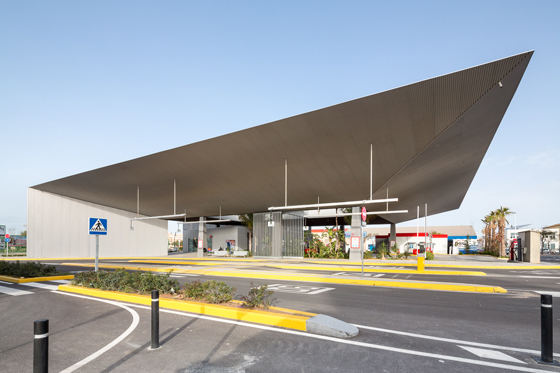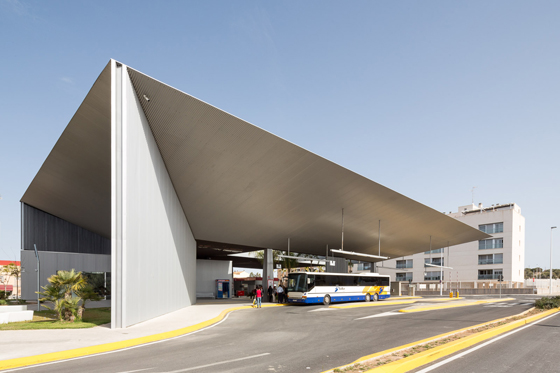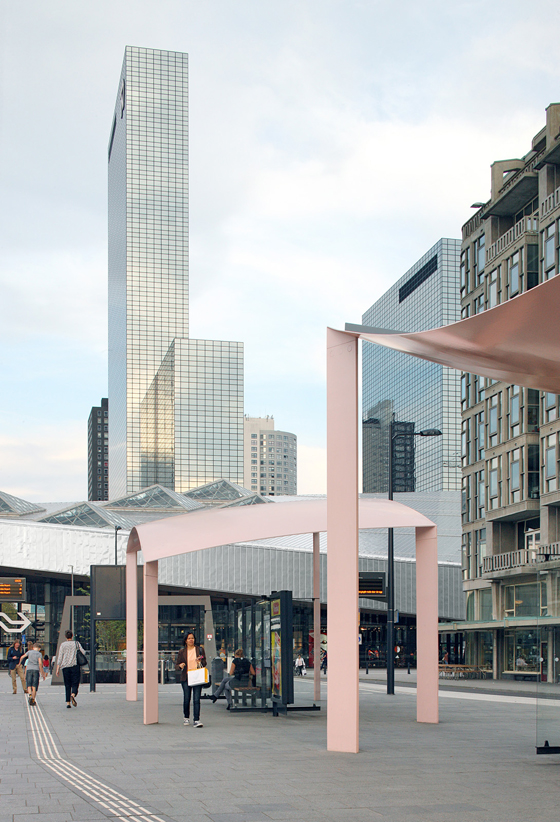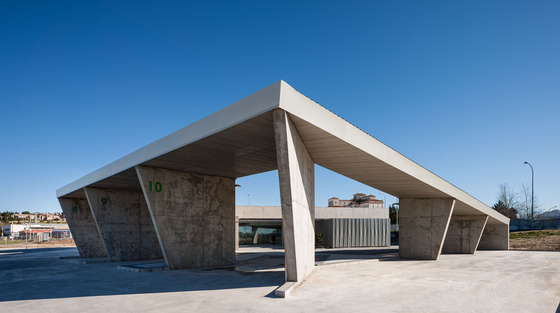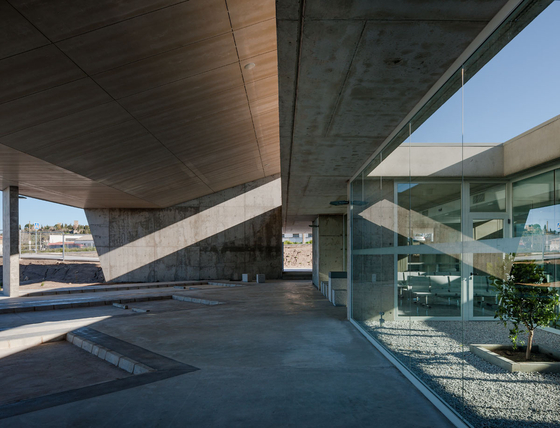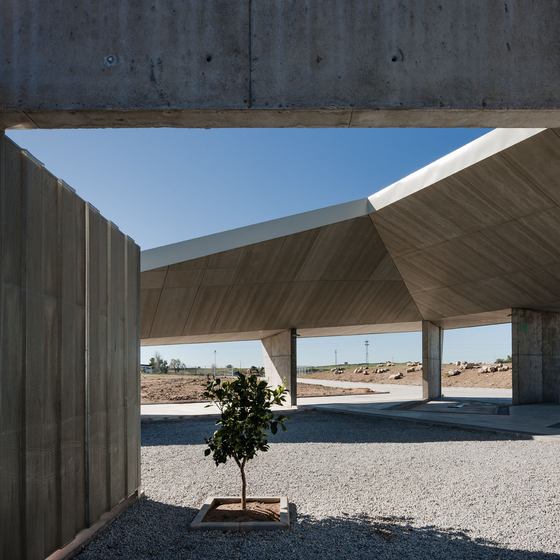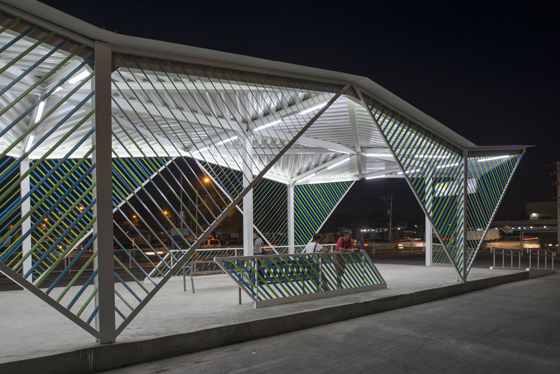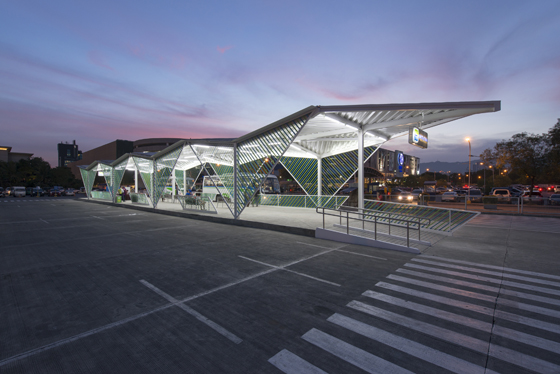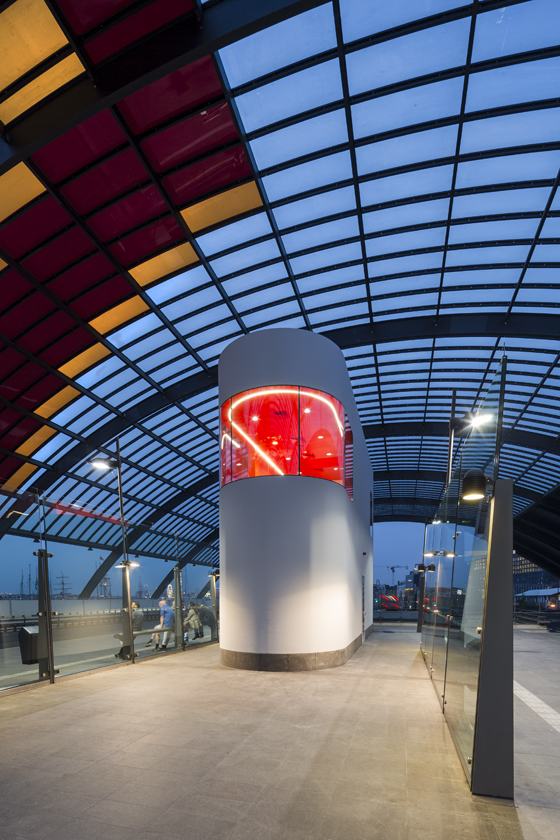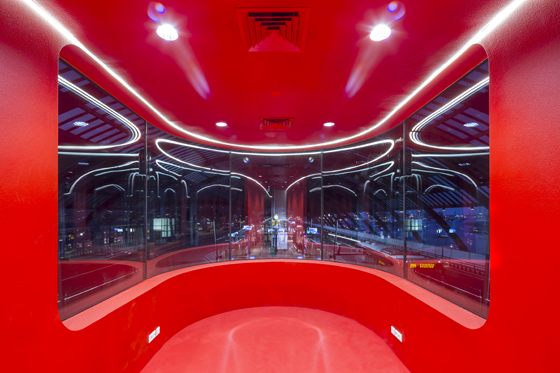Next Stop: new bus-station architecture
Scritto da Simon Keane-Cowell
Zürich, Svizzera
03.08.16
Summer's here. Let's take a trip! Traditionally the poor cousin to more grandiose transport-architectural types like airports and railway stations, bus-station design is moving into top gear.
Bus station as landmark in Santa Pola, Spain, thanks to its dramatic, tapering metal canopy, designed by architects Manuel Lillo and Emilio Vicedo. Photos: Filippo Poli
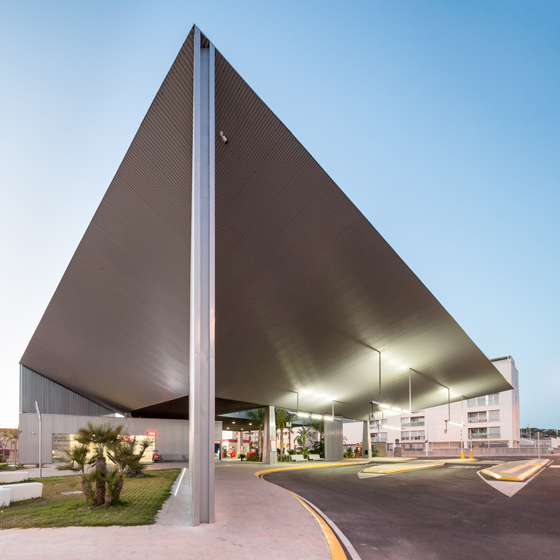
Bus station as landmark in Santa Pola, Spain, thanks to its dramatic, tapering metal canopy, designed by architects Manuel Lillo and Emilio Vicedo. Photos: Filippo Poli
בWe’re all going on a summer holiday,’ sang a youthful Cliff Richard in his imaginatively titled screen musical Summer Holiday of 1963, where the quiffed teenage heartthrob and a gang of adolescent pleasure-seekers availed themselves of an iconic London double-decker bus to drive across continental Europe. The sun, the fun, the mechanical hi-jinks. (The movie was, of course, a mere vehicle – if you’ll excuse the pun – for the promotion of the rock-and-rolling poster boy.)
Bus stations, as building types go, however, have tended to get a bit of a raw deal when compared to the majesty of train stations and the glamour of airports. There are exceptions, of course, such as the art-deco splendour of London’s Victoria Coach Station (1932) and Dublin’s international-style Busáras (1945–53), designed by Ireland’s foremost architect of the age, Michael Scott, and replete with undulating concrete canopy, rooftop restaurant and cinema. And, of course, Preston Bus Station in the north of England, completed in 1969, whose brutalist expression recently saw the building achieve listed status.
The new Santa Pola bus station in Spain differentiates itself emphatically from its immediate industrial landscape through its bold geometric form. Photos: Filippo Poli

The new Santa Pola bus station in Spain differentiates itself emphatically from its immediate industrial landscape through its bold geometric form. Photos: Filippo Poli
×A number of the latest bus-station and bus-stop projects internationally are demonstrating, however, how architects are keen to add value to this utilitarian form of construction, turning the structures into destinations in themselves. A large metal, tapering canopy, for example, supported by angled walls, lends the new bus station in Santa Pola, Spain, dramatic form. Designed by architects Manuel Lillo and Emilio Vicedo to shelter waiting passengers, the landmark building is easily distinguishable from its surrounding industrial context and, as a point of departure and arrival, performs a valuable place-making function.
MAXWAN architects + urbanists have created a series of limited-budget, ludic bus stops to help shape the public realm around Rotterdam’s Central Station that feature the world’s thinnest steel roofs. Photos: Filip Dujardin
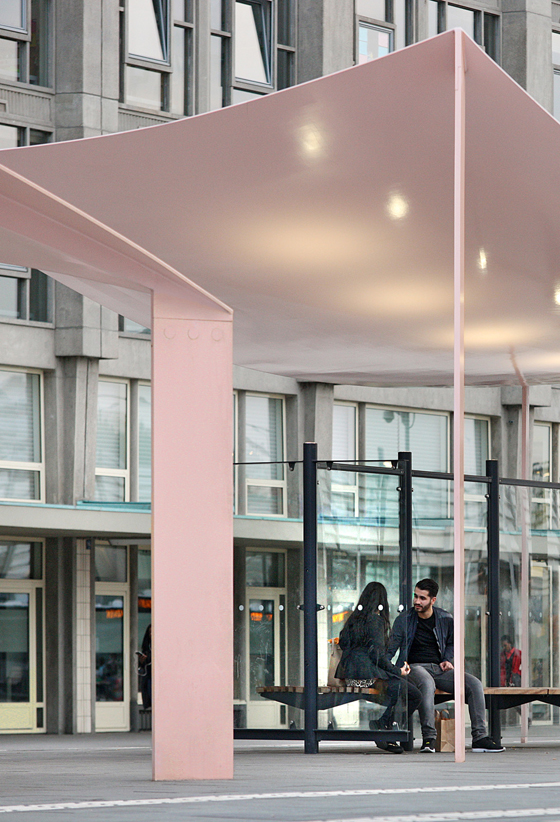
MAXWAN architects + urbanists have created a series of limited-budget, ludic bus stops to help shape the public realm around Rotterdam’s Central Station that feature the world’s thinnest steel roofs. Photos: Filip Dujardin
×Placing-making, too, via MAXWAN architects + urbanists’ series of limited-budget, yet highly playful, bus stops at Rotterdam’s Central Station transport hub. Billed by the architects as possessing the world’s thinnest steel roofs – visually light yet each weighing 5 tonnes – their alternating concave and convex forms lend the public realm around the station (an environment typically characterised by transience) a friendly, welcoming identity.
Located at the interface between the urban and the rural, Ismo Arquitectura’s monolithic, concrete bus station in Trujillo, Spain, echoes the craggy landscape in which it is situated. Photos: Fernando Alda

Located at the interface between the urban and the rural, Ismo Arquitectura’s monolithic, concrete bus station in Trujillo, Spain, echoes the craggy landscape in which it is situated. Photos: Fernando Alda
×A different kind of landscape provides the context for Ismo Arquitectura’s bus station in Trujillo, Spain. Situated at the cuspal point between town and countryside, the monolithic concrete structure, organised around a series of courtyards and providing a café and long- and short-distance waiting rooms, dialogues materially and tonally with the stony terrain around it. Overlapping roof slabs, as well as the strategic use of glazing, permit the penetration of daylight into the bus station’s interior, mitigating the mass of concrete that serves to define it.
Ziggurat-form roofs and glass panels, supported by linear graphics, characterise architectural office CAZA's series of bus stations for the city of Cebu, Philippines, a reference to local basket-weaving traditions. Photos: Frank Callaghan
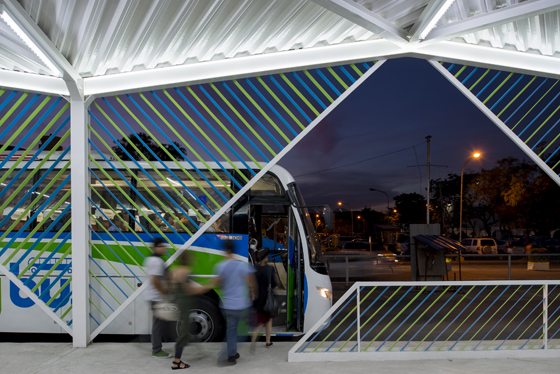
Ziggurat-form roofs and glass panels, supported by linear graphics, characterise architectural office CAZA's series of bus stations for the city of Cebu, Philippines, a reference to local basket-weaving traditions. Photos: Frank Callaghan
×At Cebu, in the Philippines, architectural office CAZA have delivered a series of highly expressive bus stations as part of the city’s new transport system, BRT, which, according to the architects, reference the city’s basket-weaving traditions. Archly geometric, their ziggurat-form roofs (which are designed to catch rainwater) and glazed panels are supported graphically by the application of green and blue stripes to the latter – providing additional shading and making a metaphorical nod to connecting lines between points on a bus map.
A two-storey, 80-square-metre building for bus drivers at Amsterdam's Central Bus Station, courtesy of Benthem Crouwel architects, houses within its modest footprint a canteen, workspace, storage and toilets. Photos: Jannes Linders
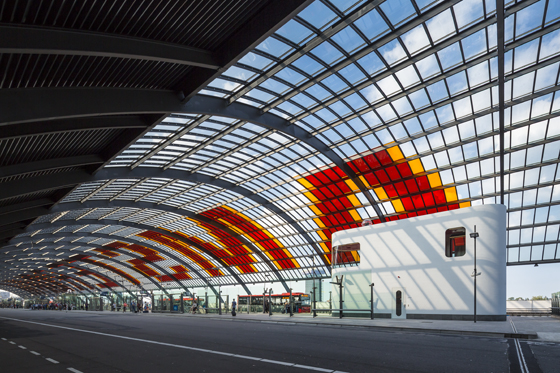
A two-storey, 80-square-metre building for bus drivers at Amsterdam's Central Bus Station, courtesy of Benthem Crouwel architects, houses within its modest footprint a canteen, workspace, storage and toilets. Photos: Jannes Linders
×But, as everyone knows, it’s not just about passengers. You’ve got to look after the driver, too. Back in the Netherlands, Benthem Crouwel have completed a diminutive, two-storey building within Amsterdam’s Central Bus Station, exclusively for bus drivers to use. At just 80 square metres, the structure comprises a storage area, a technical area and toilets at ground level, and, on the upper floor (accessed by a spiral staircase), a canteen and workspace. A generous window that wraps around the end of the building’s elongated form affords a panoramic view of both the bus station’s busy interior and of the adjacent River IJ.
Bus stations really are going places.
© Architonic

